Hello everyone, I am Poison Mushroom.
Recently, the hottest smartphone processor is the Dimensity 8100. This mid-range processor chip has successfully gained popularity with the power consumption of the Snapdragon 870 and the performance of the Snapdragon 888, earning the title of a legendary chip. From the Redmi K50 to the Realme GT3 Neo, and then to the OnePlus Ace and Vivo S15 Pro, various smartphone manufacturers have launched new products centered around this legendary chip.
However, most of the 8 existing smartphones on the Dimensity 8100 platform are equipped with OLED screens. For many consumers with sensitive eyes, no matter how good the phone is, they won’t buy it if it doesn’t have a non-flickering LCD screen. Perhaps the manufacturers understand the needs of consumers, which is why the two phones mentioned in the title were released.
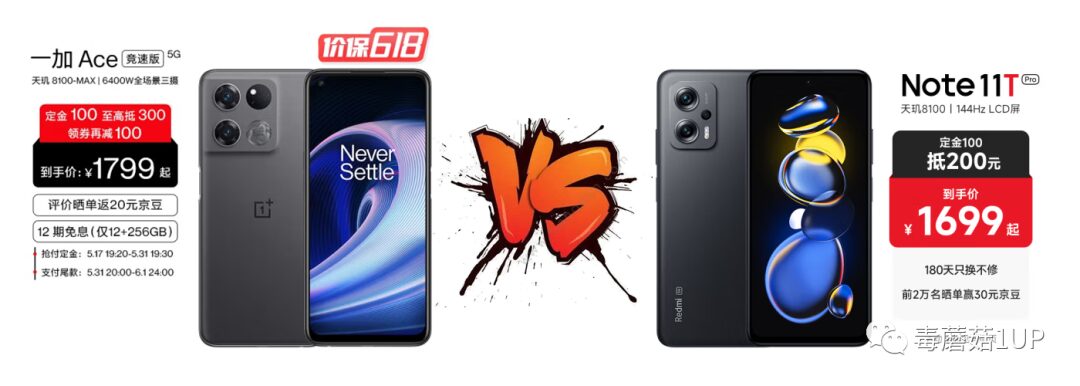
Both phones come with the core hardware trio of Dimensity 8100 + UFS 3.1 flash storage + LPDDR5 memory. According to the official data, one focuses on a “flagship LCD screen” (Redmi Note 11T Pro), while the other emphasizes a “high-speed gaming display” (OnePlus Ace Racing Edition). Looking solely at the screen data, although both are DC dimming LCD screens, the Redmi has a slightly higher refresh rate and brightness. Adding in the price, OnePlus is more generous: the OnePlus Ace Racing Edition 8+128GB is priced at 1799, while the Redmi Note 11T Pro 6+128GB is priced at 1699. The price difference for larger capacity versions is even more significant, but these two can be considered products in the same price range, making them perfect for a comparison.
The data displayed on the table is visible to everyone, but the “small tricks” hidden in the official parameters can only be discovered by users when they get their hands on the actual device. To visually demonstrate the differences between these two phones, I bought both the OnePlus Ace Racing Edition (8G+256G) and the Redmi Note 11T Pro (8G+256G).
Appearance Differences
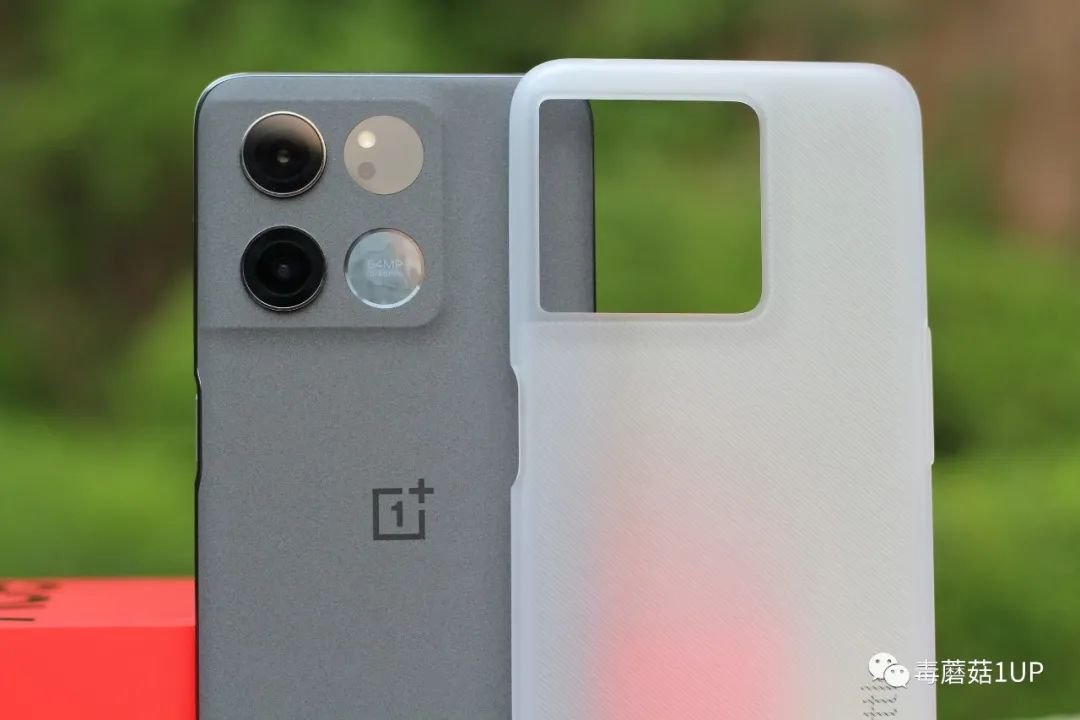
Both phones come with a 67W fast charging head, a USB 2.0 fast charging cable, and an official protective case. The only difference is that the protective case for the OnePlus Ace Racing Edition has a matte texture, with raised corners, making it thicker and offering better protection.
The model I purchased is in the competitive gray color, and the back cover resembles OnePlus’s sandstone finish.
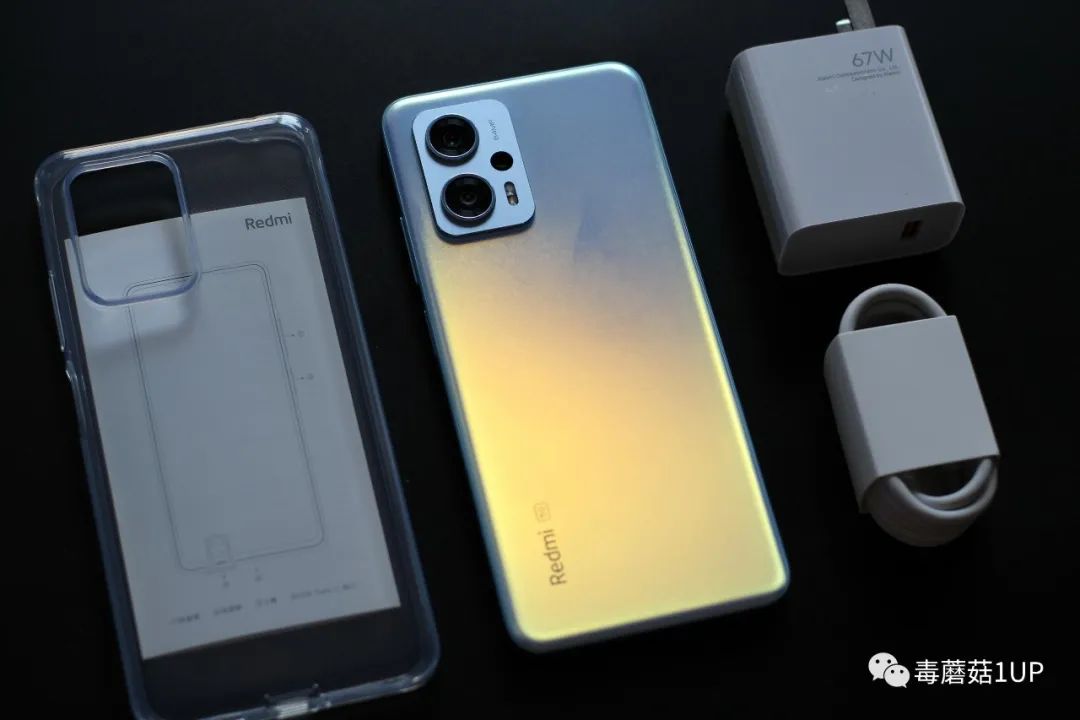
I got the Redmi Note 11T Pro in the time blue version, which changes color at different angles under sunlight. Its original shell is a transparent case, which is better than the few dollars cheaper transparent cases on third-party platforms, as the original shell has accurately positioned openings and a cover over the USB port, enhancing its waterproof performance to a certain extent (the 3.5mm headphone jack is not covered).
Both phones have waterproof features, but the Redmi has an IP53 rating, while the OnePlus has an IPX4 rating, with the former offering dust protection and the latter providing stronger waterproofing.
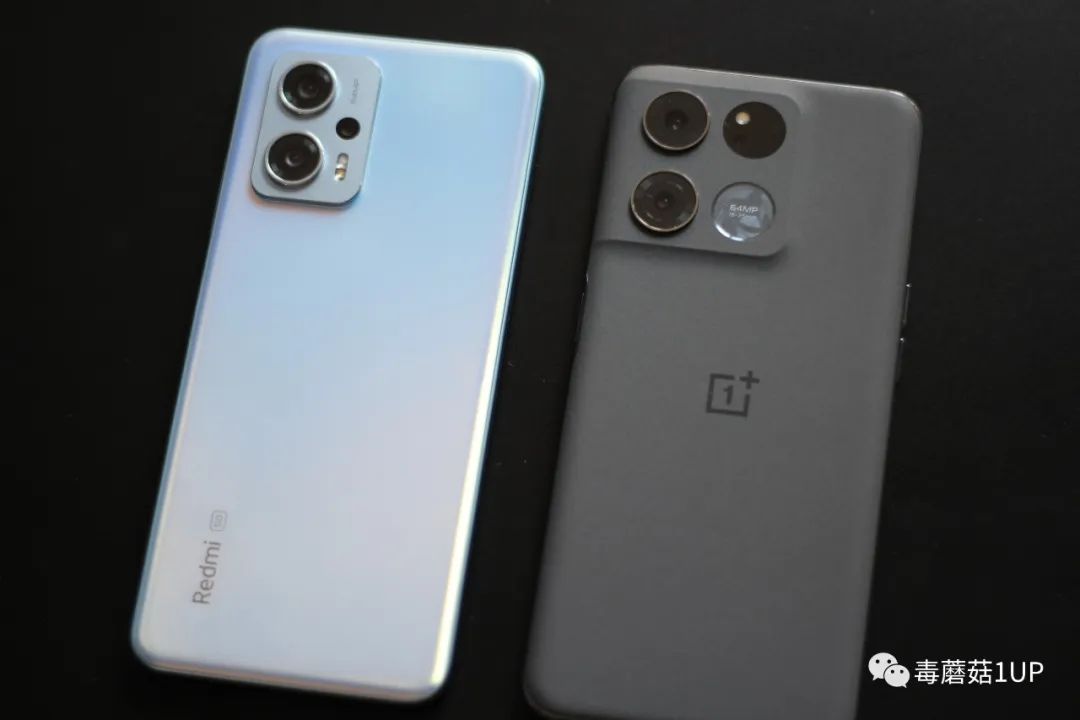
Both phones have plastic back covers, but when peeling off the IMEI sticker and network license, I could clearly feel the back cover of the Redmi becoming very thin—perhaps the OnePlus’s plastic is not very thick either, but it has a matte finish, so the sticker does not adhere as tightly as it does on the Redmi.
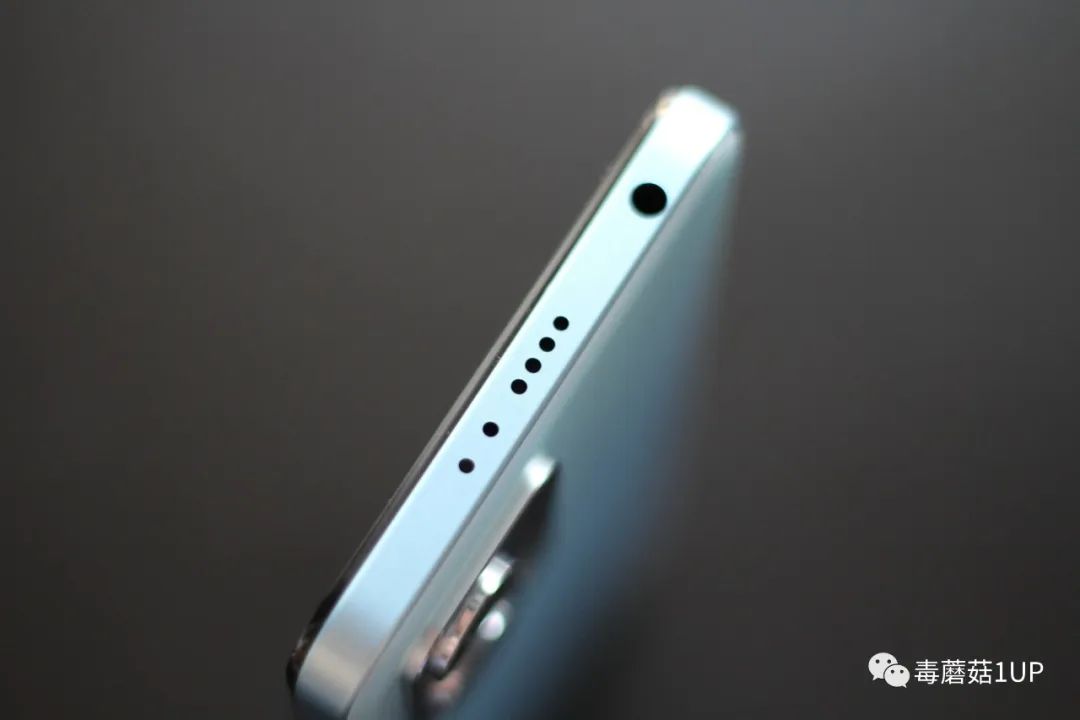
Both phones are equipped with stereo dual speakers, with the top speaker designed as a combination of the earpiece. They both have a 3.5mm headphone jack; the difference is that the Redmi has it on the top, while the OnePlus has it at the bottom. Besides the headphone jack, the Redmi Note 11T Pro also has an infrared port on the top and an additional sound hole that looks like an independent unit. In reality, this is not an independent speaker, but an additional hole for the earpiece from the top—measuring in MIUI 13.04, the volume is slightly lower than that of the OnePlus Ace Racing Edition (ColorOS 12.1 A.04), while in terms of sound quality, I couldn’t detect any difference between the two.
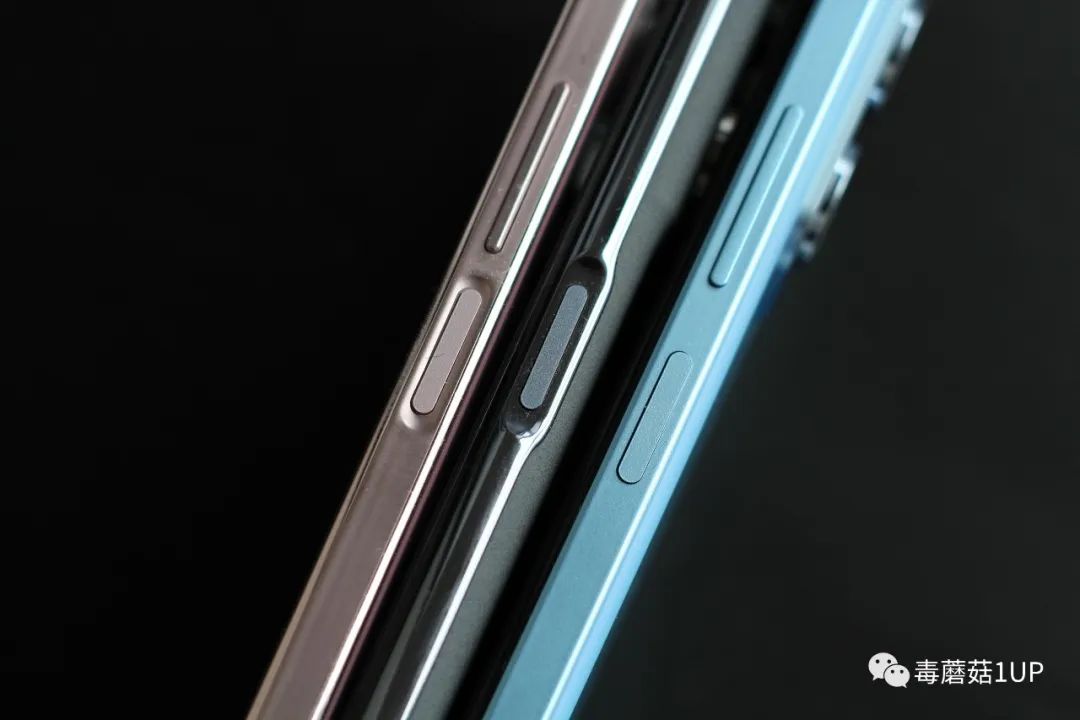
Both phones have side-mounted fingerprint sensors, but the frame designs are slightly different. OnePlus’s frame has curves, while Redmi’s is “flat-edged.” I don’t know if everyone noticed the little tricks of Redmi? To illustrate the issue more easily, I have introduced another side-mounted fingerprint phone: Honor Play6T Pro. The frame of the Redmi Note 11T Pro is different from the other two, as its power button is raised.
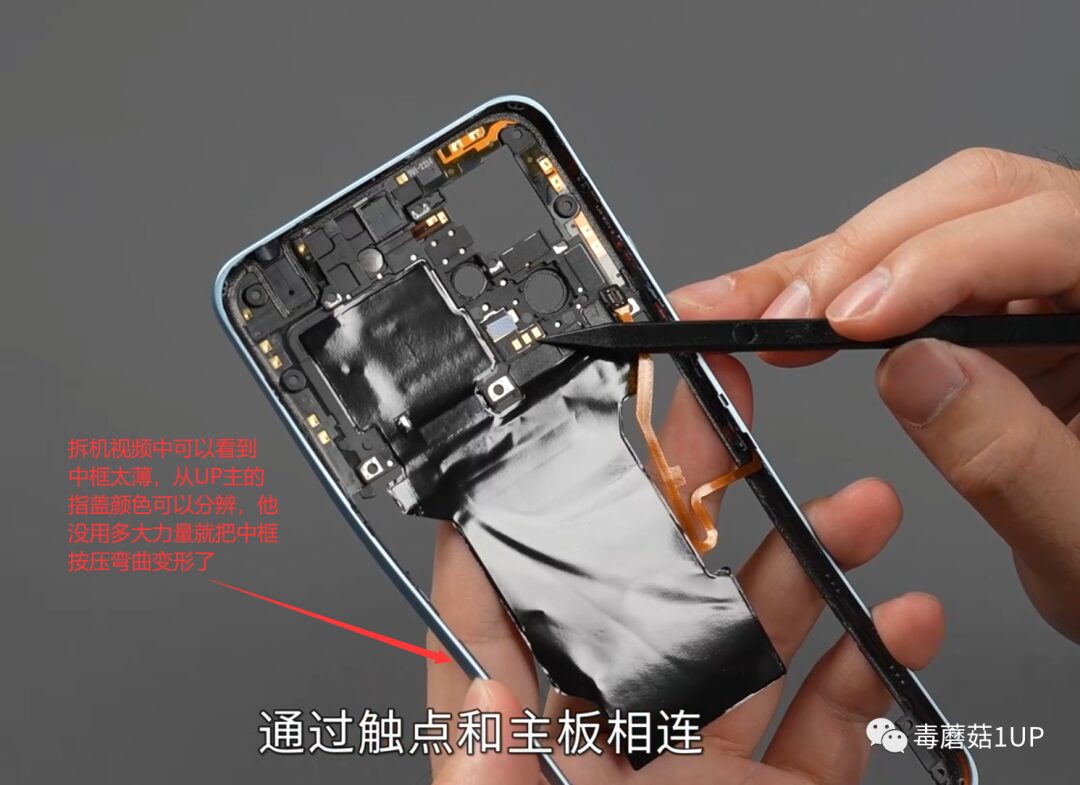
I specifically found a teardown video of the Redmi Note 11T Pro+ (from Enjoy Teardown), and as seen in the image above, the frame of this Redmi phone is very thin. Just picking it up causes the frame to deform.
So the question arises, if the OnePlus Ace Racing Edition and Honor Play6T Pro have recessed buttons for better fingerprint positioning and faster unlocking (which might also increase frame thickness to enhance drop resistance and protect the screen), why does the Redmi Note 11T Pro go in the opposite direction and have such a thin frame?

I think this image should provide an answer. From left to right are the OnePlus Ace Racing Edition, Redmi Note 11T Pro, and Honor Play6T Pro. If you look closely at the black borders on both sides of the screen, doesn’t it visually appear that the OnePlus is the thickest, the Redmi is the second thickest, and the Honor is the narrowest?

In fact, apart from the OnePlus and Honor having raised frame designs, the black borders of the OnePlus and Redmi are the same width—though the Honor’s is indeed the narrowest, which can be judged by the naked eye without needing a ruler.
I usually use my phone with a case, so I can fully accept a plastic frame and back cover; I’m also not against making a little effort in aesthetics, but the key is whether such a thin frame can keep up with protective capabilities?
Screen Differences

Since we just talked about the frame, let’s discuss the screens of both phones. The two screens are not of the same brand or model, so there is a significant difference in color adjustment. On a white background, the OnePlus Ace Racing Edition appears reddish, while the Redmi Note 11T Pro appears bluish. However, if you do not compare the two phones side by side or simply look at some images, this difference is not very noticeable.
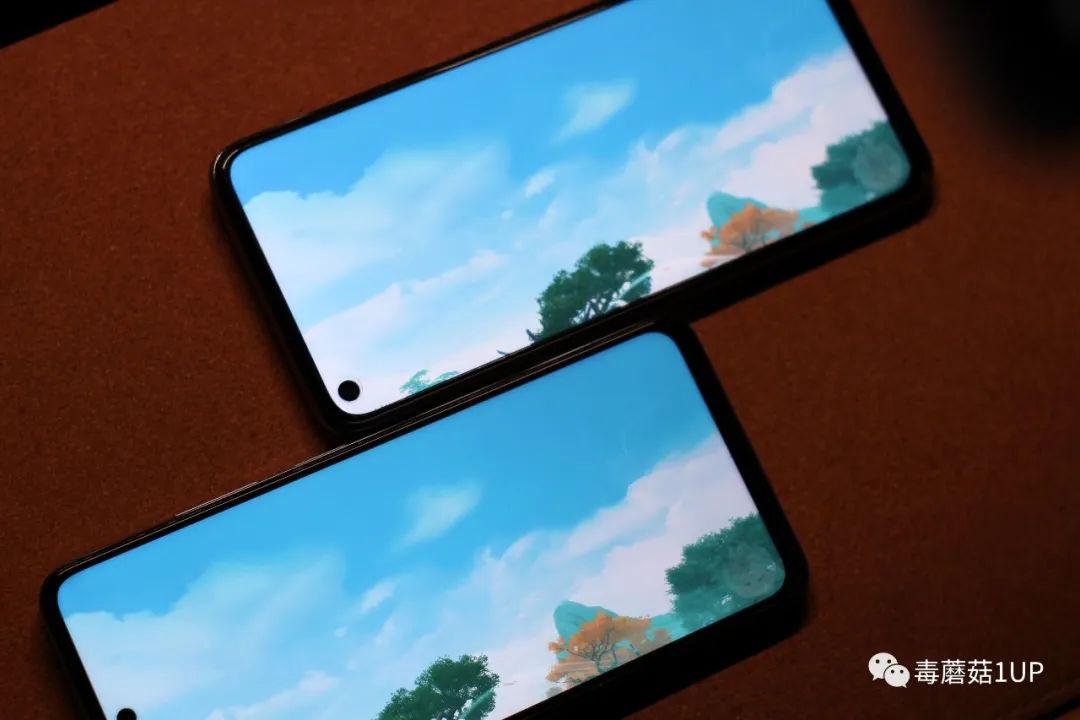
For example, when comparing the two phones in benchmark scores, if you block the punch hole and the borders, I don’t believe you can tell which is which at a glance.
Some friends might say that I’m deliberately criticizing Redmi, but during the launch event, they said this is a DisplayMate A+ certified LCD screen, which is no worse than OnePlus’s screen in terms of color. Please don’t joke; the Pro version does not have DisplayMate A+ certification, only the Pro+ does. So, how does the Pro version without the + fare in screen quality?
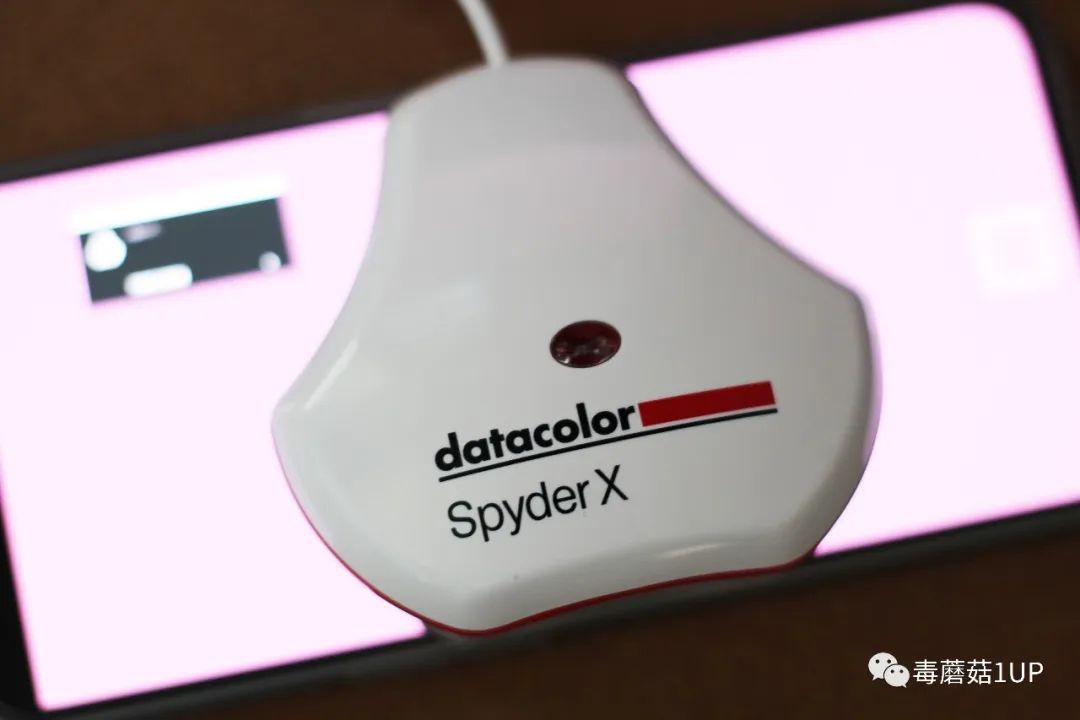
Isn’t it a coincidence that I have the expensive Datacolor Spyder X Elite calibration tool, so let’s measure how the colors of the two screens compare.
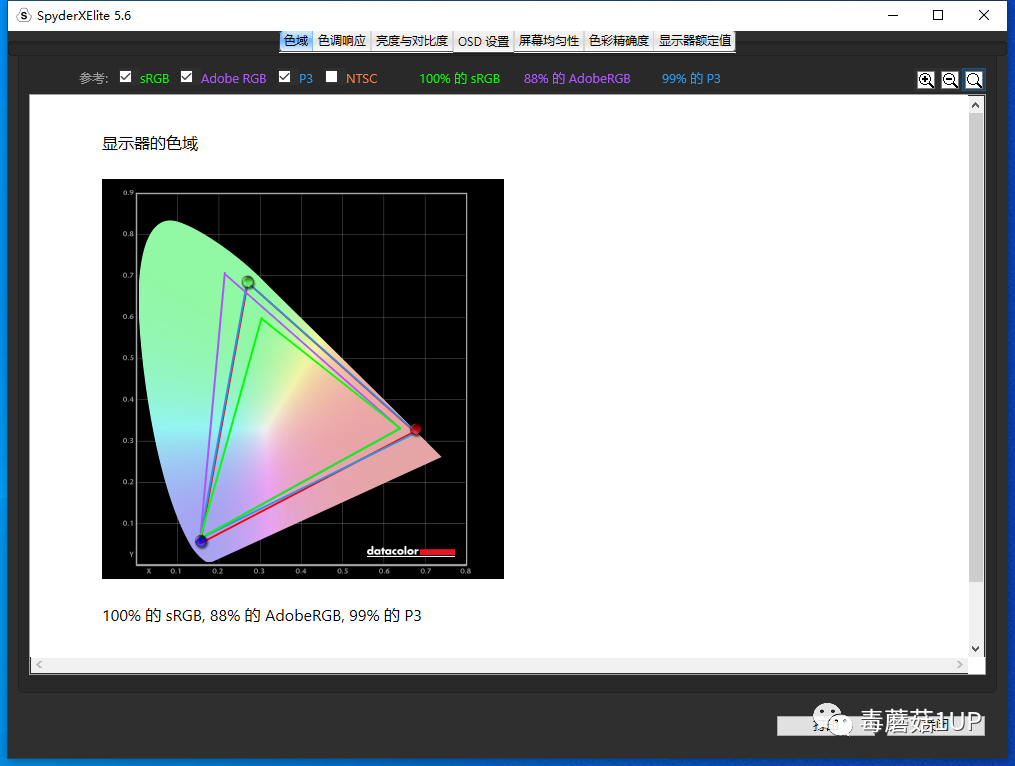
Both screens cover 100% sRGB and 99% P3—official data states 100%, but my calibration tool measured it at 99%.
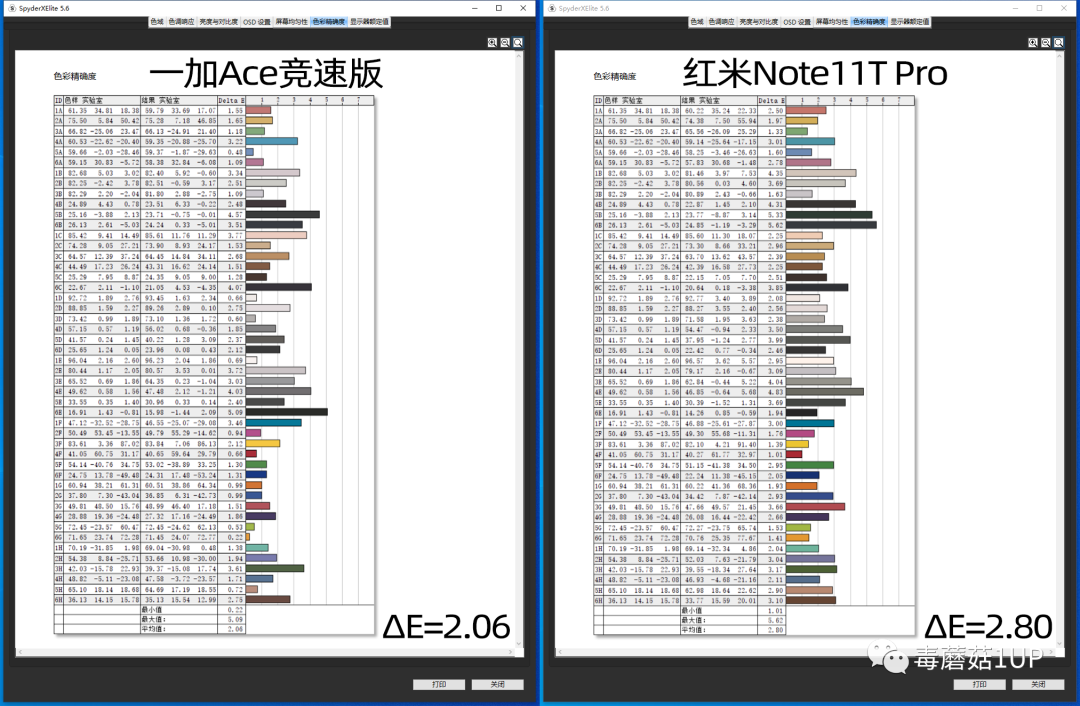
“ΔE (Delta-E) is a unit of measurement for color difference perceived by the human eye in a uniform color space. This testing method is used by manufacturers to ensure color consistency when a user specifies or accepts a certain color. ΔE quantifies the accuracy of color reproduction as a numerical value, where a smaller value is better, and a higher score indicates greater color distortion.”
Let’s take a look at color accuracy.
Redmi Note 11T Pro+: “Original color screen with professional color accuracy, calibrated piece by piece, ΔE≈0.44”
Redmi Note 11T Pro: ΔE=2.80……
Good, very good. Please do not only promote the parameters of higher-grade products; make the parameters of the lower-grade products larger next time.
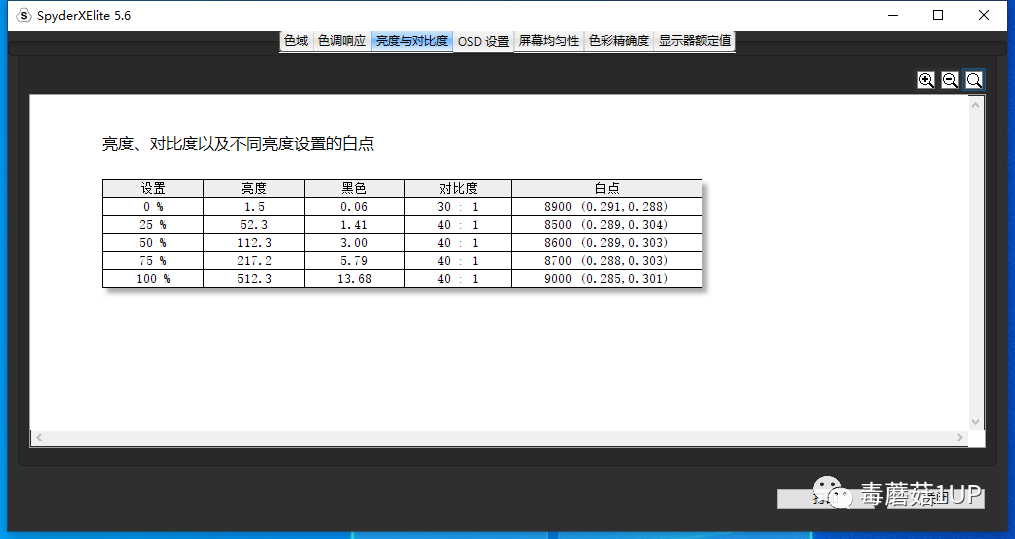
However, apart from the average color accuracy, the maximum brightness of the Redmi screen does indeed exceed that of the OnePlus Ace Racing Edition. After testing, the OnePlus reaches 455 nits at 100% brightness, while the Redmi can reach 512 nits. However, I personally feel that the brightness adjustment of the Redmi is not very linear, as can be partially inferred from the above data. Although brightness adjustment relies solely on a slider, which is not intuitive, I can still distinguish where approximately 50% brightness and 75% brightness are, right? Is 100% brightness more than twice as high as 75% and three times as high as 50%?
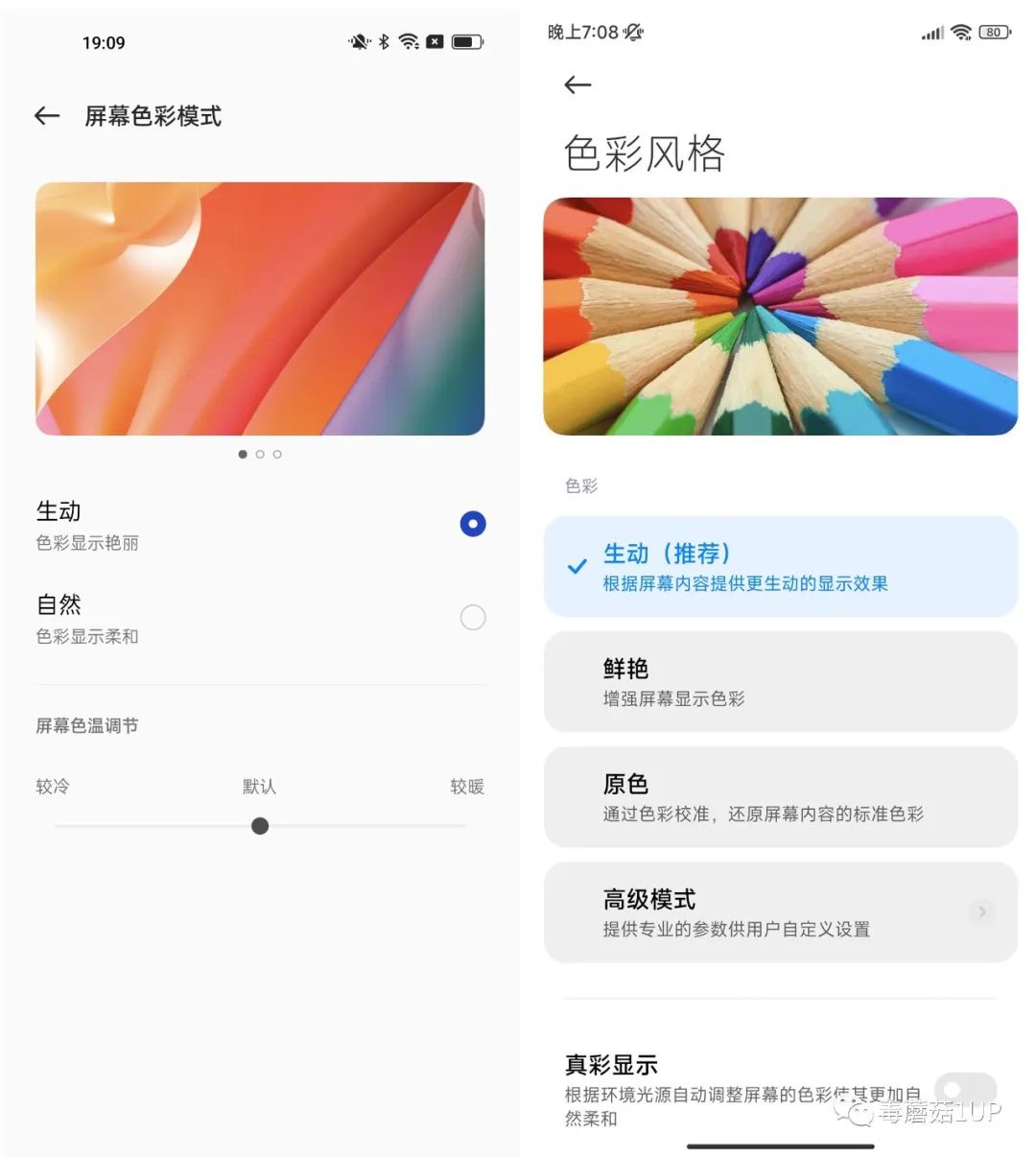
If we are to say where the Redmi screen is better than the OnePlus, it must be in the color settings. The OnePlus Ace Racing Edition has fewer adjustable options in the settings compared to the Redmi Note 11T Pro, such as missing advanced mode and true color display.
Hardware and Heat Dissipation
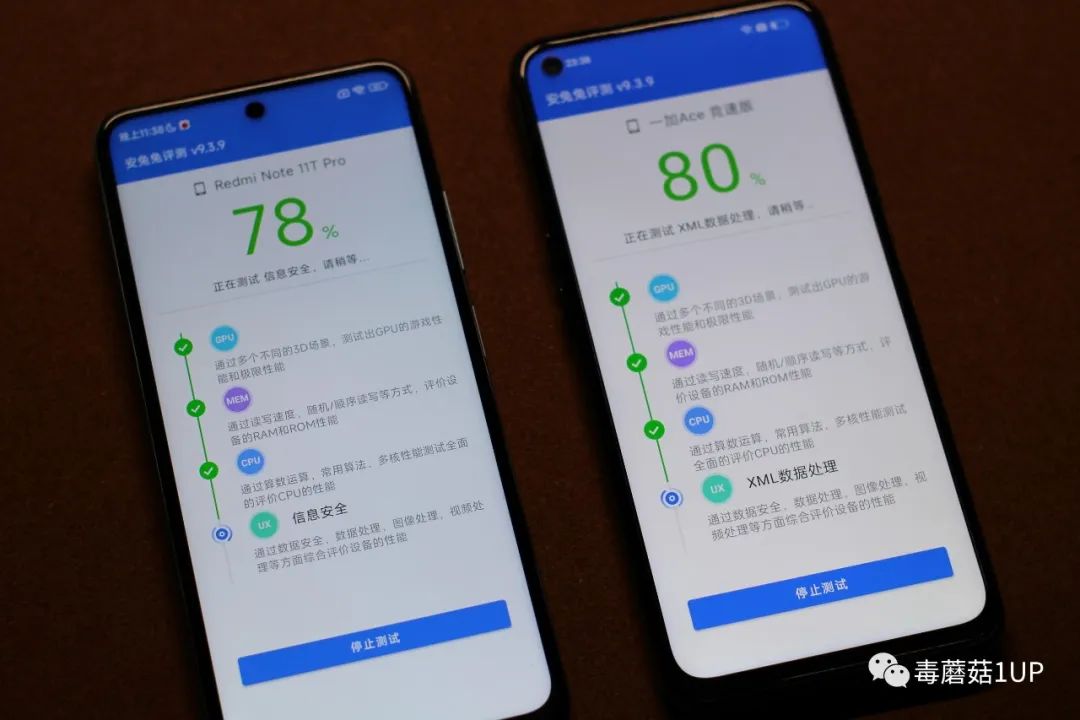
If there is anything that can highlight performance differences, it must be the AnTuTu benchmark scores. Both use the Dimensity 8100 + UFS 3.1 flash storage + LPDDR5 memory trio, theoretically offering similar performance, but the performance scheduling of the Redmi is too conservative:
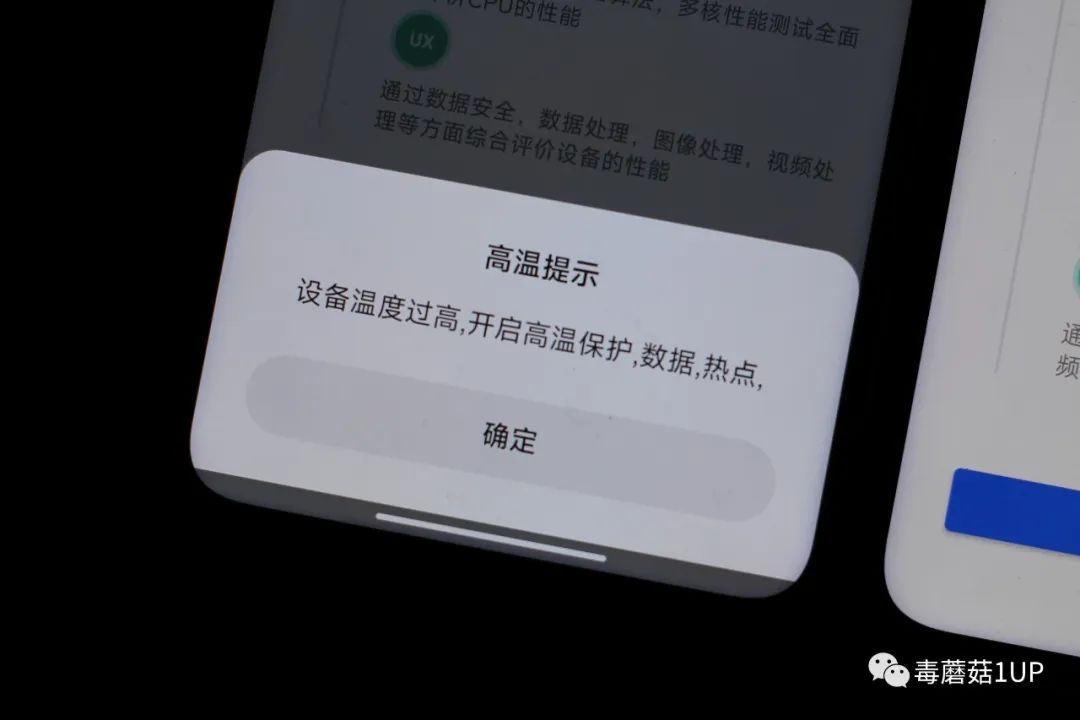
Under the same testing conditions, after two consecutive AnTuTu benchmark tests, the Redmi Note 11T Pro prompted that the device temperature was too high and activated high-temperature protection. I find this prompt poorly designed; it shouldn’t use English punctuation at least, right? Moreover, that sentence was incomplete; it should say, “Device temperature too high, activating high-temperature protection; data, hotspot, location, camera, and other resources will be limited.” After the popup, the Redmi Note 11T Pro will lock the refresh rate to 60Hz, lock the big cores (4c to 3c), and video calls will stutter, etc.
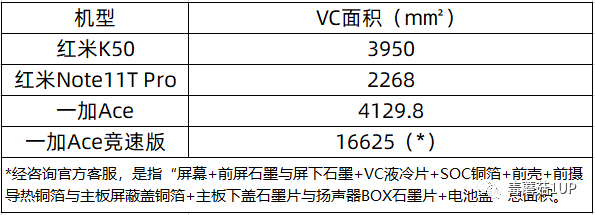
This made me very curious; logically speaking, the Dimensity 8100 processor should not generate more heat than the Snapdragon 870, so why did it struggle after just two tests (the third test was conducted on a computer desk)? I checked the heat dissipation area of the Redmi and OnePlus among these four Dimensity 8100 phones. The VC heat dissipation area of the Redmi Note 11T Pro is only a little more than half that of the OnePlus Ace; the separate VC area of the Ace Racing Edition does not have data, but based on performance release, it should be at least in the 3-series range.
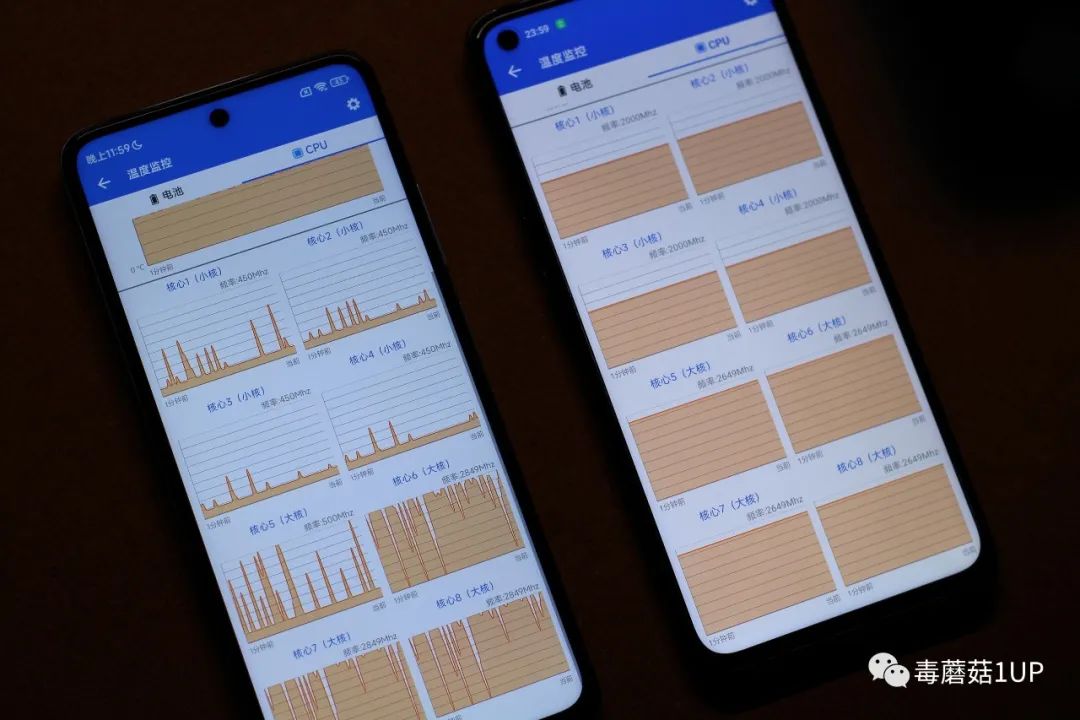
AnTuTu benchmark scores show that the OnePlus Ace Racing Edition is slightly higher; without enabling performance mode, the scores are OnePlus 760k/Redmi 740k, and when performance mode is enabled, both are around 820k, with Redmi slightly higher, but it triggers temperature control faster. After triggering temperature control, both big and small cores will throttle.
I feel that OnePlus also has temperature control and frequency reduction measures; as shown in the image above, the Redmi locked one big core at 500MHz, while the other three can still run at 2.85GHz; OnePlus did not lock any cores, but all four big cores were reduced to 2.65GHz.
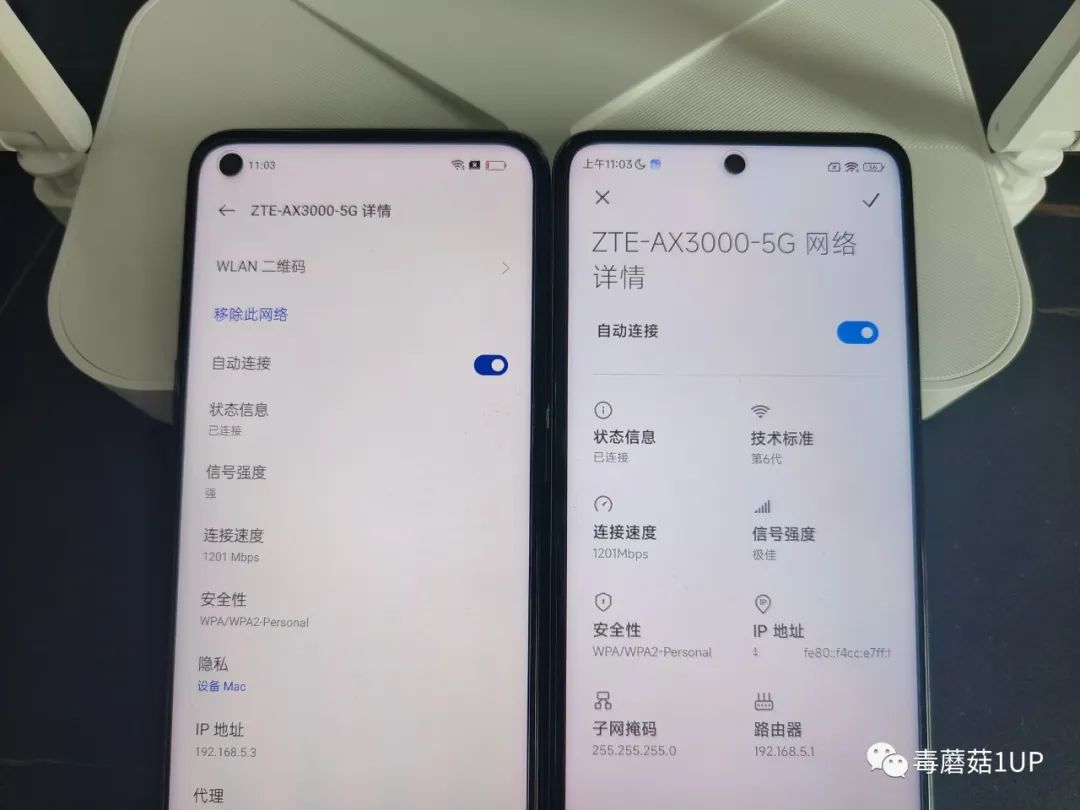
Additionally, regarding storage, both use UFS 3.1 flash storage, with slight differences in storage benchmark scores; each has its advantages, but overall, the OnePlus Ace Racing Edition scores slightly higher.
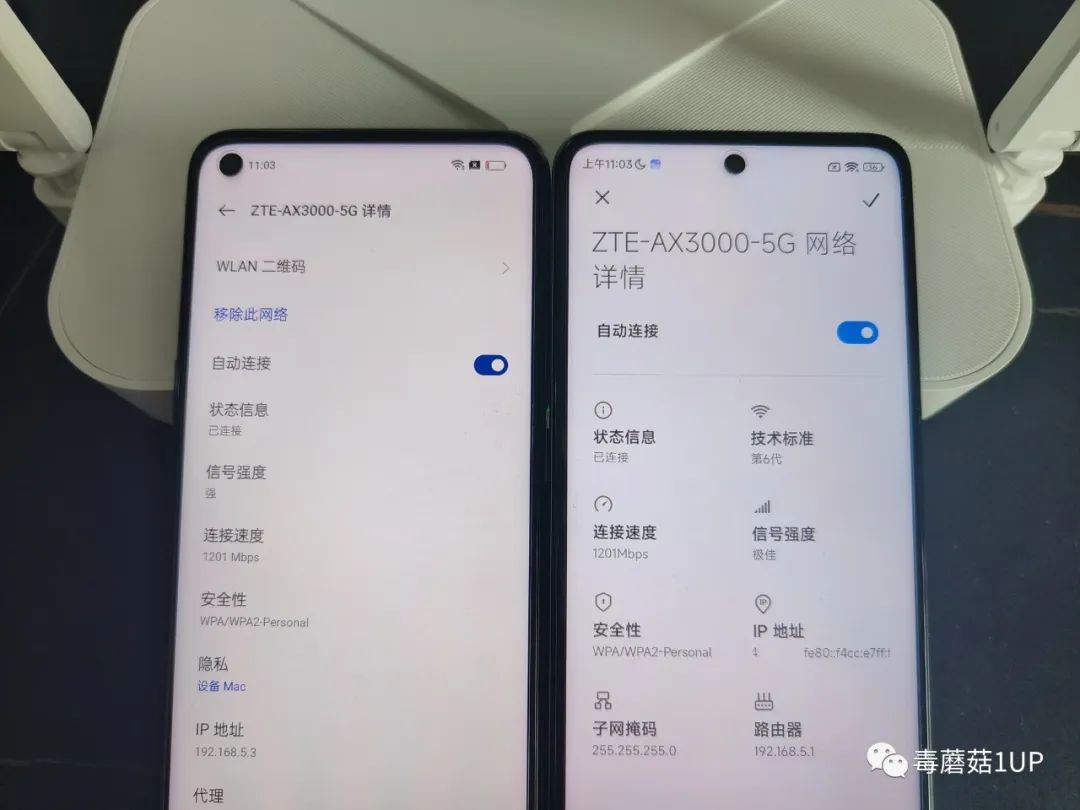
Regarding WiFi, although MediaTek has stated that the Dimensity 8100 supports enhanced WiFi 6, these two phones, or rather the OnePlus Ace, OnePlus Ace Racing Edition, Redmi K50, and Redmi Note 11T Pro, do not offer enhanced WiFi 6 due to product positioning, with 5G maxing out at 1200Mbps and unable to handshake at 2400Mbps.
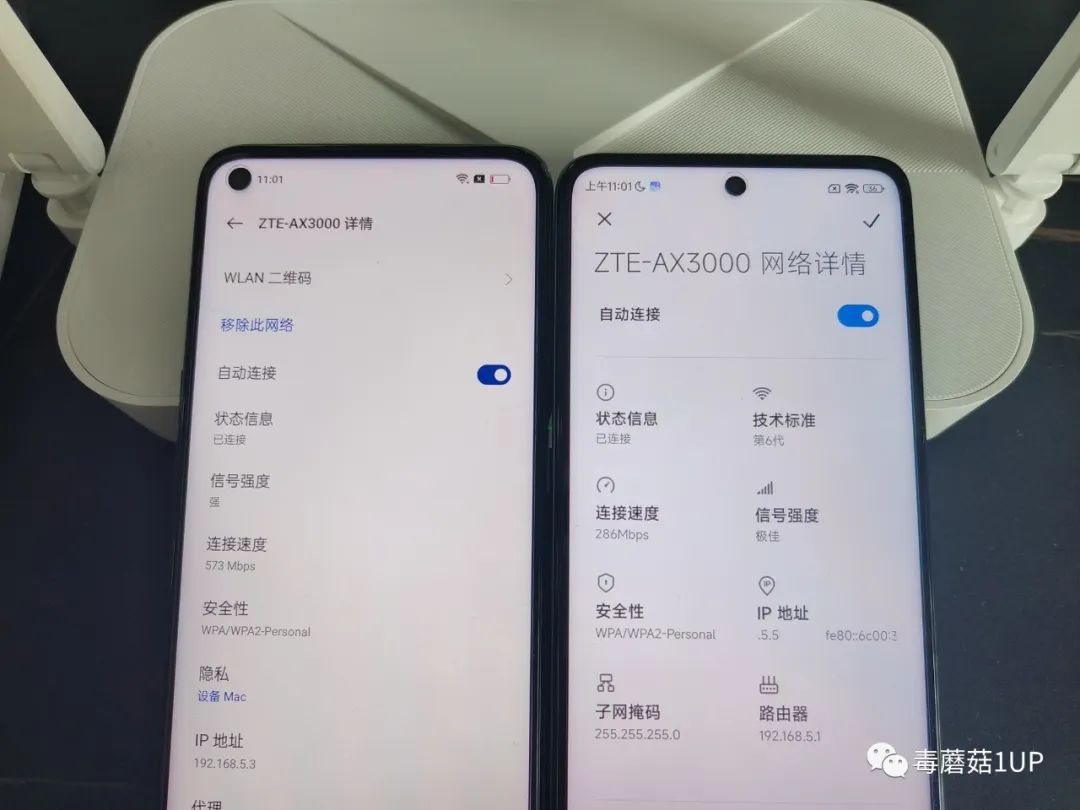
However, there is a difference in 2.4G. The OnePlus Ace Racing Edition (including the Ace standard version) can reach a maximum of 573Mbps on 2.4G WiFi 6, while the Redmi Note 11T Pro only reaches a maximum of 286Mbps. I suspect this may be due to a reduction in the antenna—MediaTek chips are sold as a complete set, including CPU, WiFi, and Bluetooth chips, so all Dimensity 8100 phones on the market use Bluetooth 5.3 protocol, but the antennas are not sold as a set, and manufacturers can cut down on an antenna without users noticing.
If you have a K50, you can try connecting it to a WiFi 6 router above AX3000 on the 2.4G band and see what speed it can reach.
Photography
Both phones feature a 64MP main camera and coincidentally use a four-in-one equivalent output scheme to “make a small sensor into a large sensor,” with default photos being 16MP.
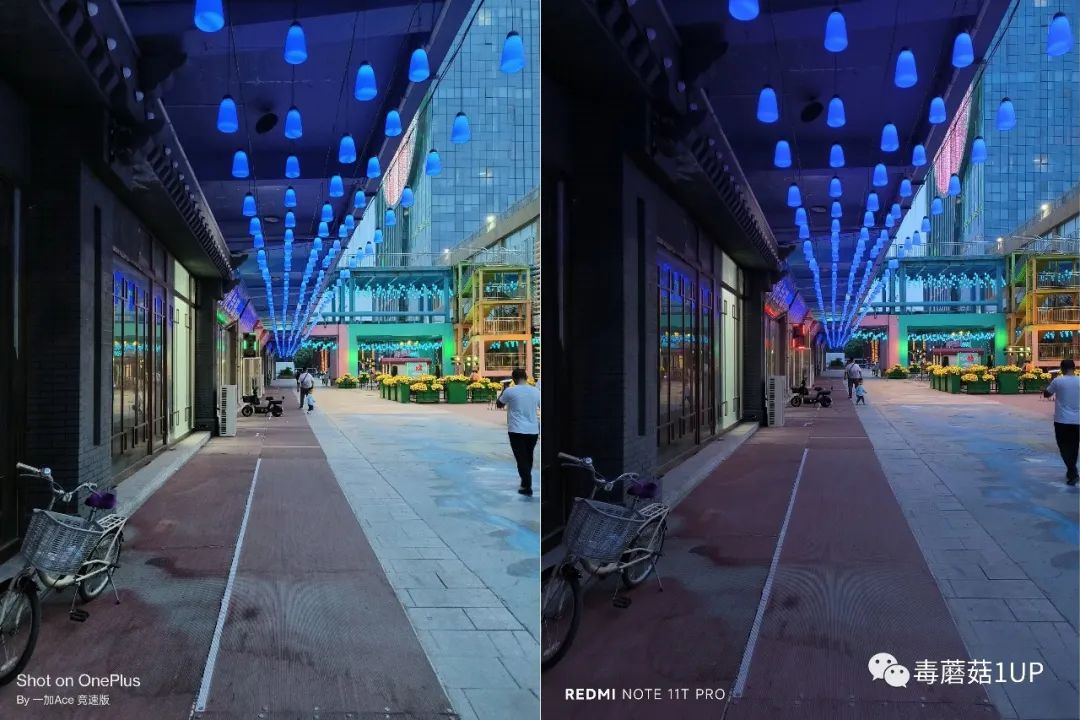
The difference is that OnePlus uses the OmniVision OV64B, while Xiaomi uses the Samsung GW1. Therefore, their imaging styles are completely different; the images above and below are taken in fully automatic mode with all defaults. The feedback in the images is that OnePlus’s colors are closer to reality, while Xiaomi’s colors are a bit more vibrant.
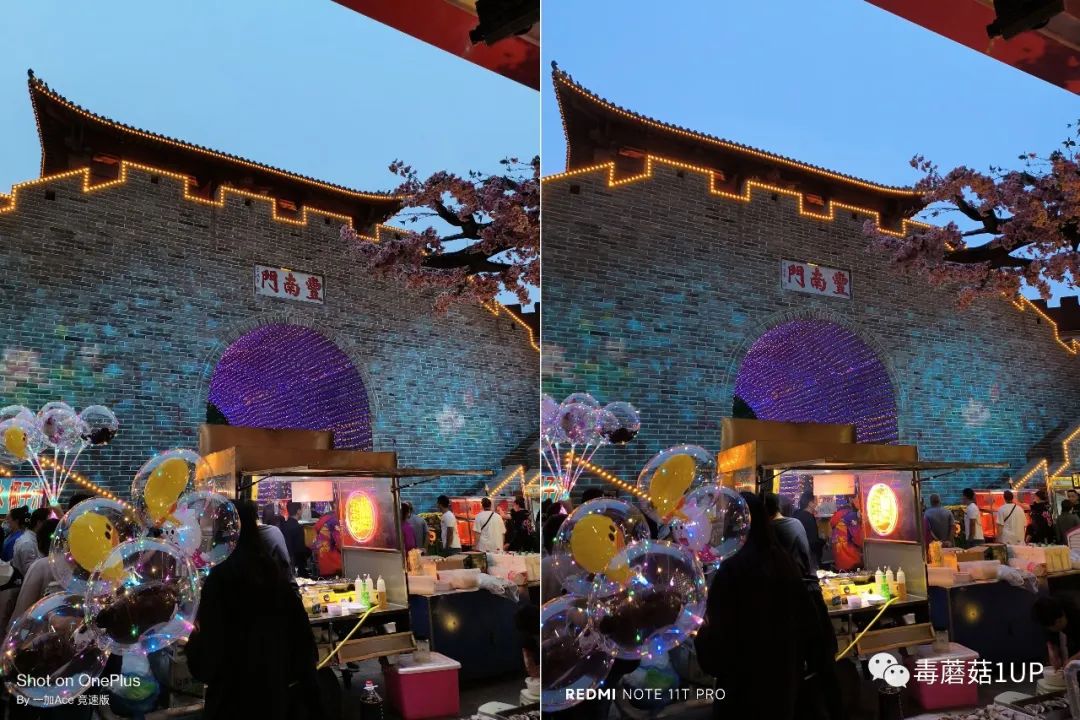
This image may be more obvious. The time I took the photo was around 19:30, and the northern sky is represented by the OnePlus Ace Racing Edition’s image, while the Redmi made the sky look blue, and the pancake stall’s lights were blurred.

Both phones do not support optical zoom and lack telephoto lenses. The zoom provided in photography is achieved through cropping; if you enable 64MP, zooming is not possible. In natural light, the default 2x zoom produces similar imaging results for both.

However, in low light or insufficient lighting conditions, the Redmi handles highlights better than the OnePlus.
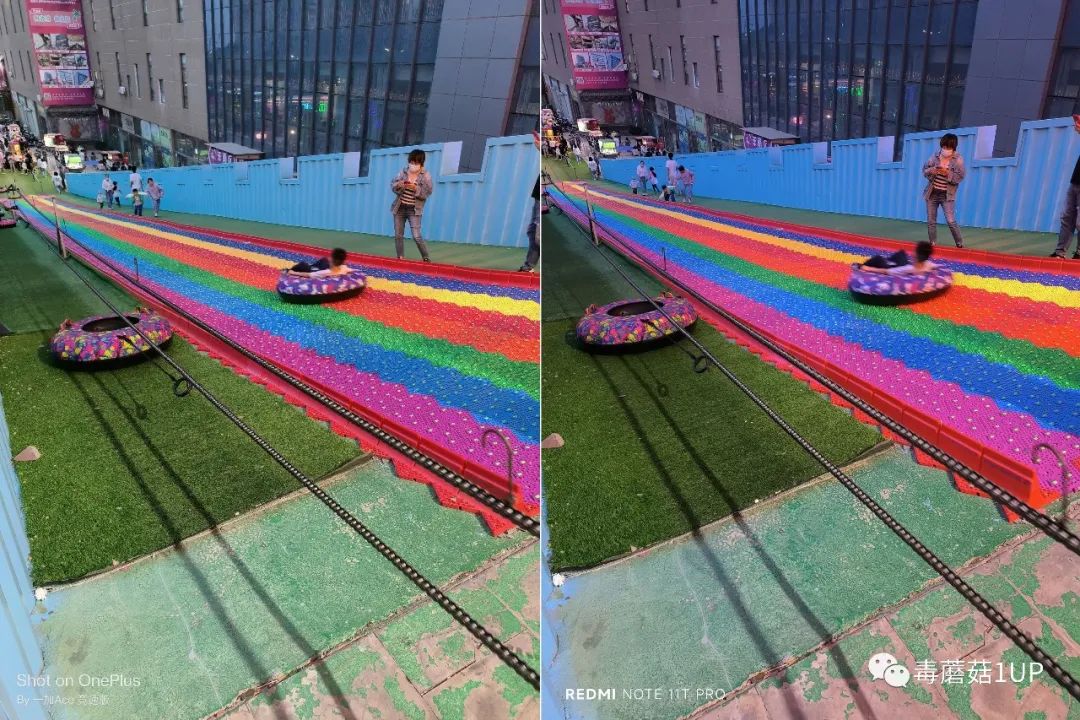
Both have poor snapshot capabilities. After all, the processors and ISPs are the same, and OnePlus’s Dimensity 8100 Max did not perform better. The front two additional lenses were not tested.
In summary, both are performance phones priced under 2000, with costs primarily in CPU and storage, and both are not very adept at photography—perhaps suitable for posting on social media and recording life, but if higher imaging quality is required, one would need to spend more to switch to another phone.
Final Thoughts
This article has presented the pros and cons of the two phones. Which phone do you think is more “conscientious”? Both phones feature Dimensity 8100 + LCD screen + 67W fast charging + over 5000mAh large battery. Based on their different characteristics, I will give a recommendation.
The Redmi Note 11T Pro’s screen is indeed brighter than the OnePlus’s; if you value screen color more, spend an extra 200 yuan to buy the Redmi Note 11T Pro+, which has more accurate colors than the version without the + in this article. Both versions use screens from Huaxing Optoelectronics, but the Pro version mentioned in this article does not have color calibration (the Pro version screens are mixed, but currently, no other versions have been seen). Oh, and the Redmi has infrared, which can be used as a remote control.
The OnePlus Ace Racing Edition’s screen is not bad either; its advantages mainly lie in more proactive CPU scheduling (after all, its heat dissipation is much stronger), better build quality (thicker frame for better drop resistance), and more complete configurations (WiFi antenna, proximity sensor)—plus, the most practical 8G+256G version is cheaper; based on JD 618 prices, OnePlus is only 1899 yuan, while I purchased the Redmi Note 11T Pro for 2099 yuan.
That’s it. Friends, what other phone comparisons do you want to see? Feel free to leave a message; I’ll continue testing as long as I can afford it.